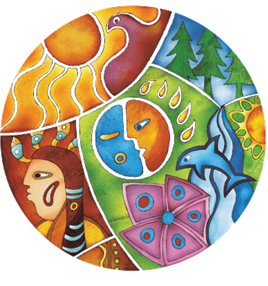“All the rights and freedoms recognized herein are equally guaranteed to male and female Indigenous individuals.”
I did a double take recently when I came across Article 44 of the 2001 United Nations Declaration on the Rights of Indigenous Peoples (UNDRIP). The wording closely echoes Section 28 of Canada’s 1982 Charter of Rights and Freedoms: “Notwithstanding anything in this Charter, the rights and freedoms referred to in it are guaranteed equally to male and female persons.” Gender equality is rarely so explicitly promised. Google searches for “rights and freedoms, male and female” turn up references to UNDRIP, Section 28, and, interestingly enough, to multiculturalism.
Constitution nerds like me get excited about how equality rights are developing here in Canada. We’re also excited about the way Charter wording is influencing equality guarantees around the world. That wording came from a stunning spontaneous 1981 women’s rebellion.
Thirty-five years ago last spring, on February 14, 1981, women’s groups from across Canada attracted 1,300 women from across Canada to the first public national conference in the House of Commons. Surprised by their success, conference leaders stayed in Ottawa and lobbied until Pierre Trudeau’s justice officials offered them a gender equality guarantee in the interpretative section — Section 28. Thirty-five years ago this fall, November 16 to 24, women’s groups won fast fierce battles with their premiers in every province to protect Sec. 28 from potential override.
Even before those public skirmishes, though, the Liberal government had already accepted amendments from organizations like the National Association of Women and the Law that strengthened all equality rights. Section 15, Equality Rights, provides a double guarantee: “Every individual is equal before and under the law and has the right to the equal protection and equal benefit of the law without discrimination…” (my italics). The new clause was intended to buck existing case law about the phrase “equal before and under the law.”
Under John Diefenbaker’s Bill of Rights, the Canadian Advisory Council on the Status of Women warned, courts had ruled that equality “before and under” the law meant only that a person could bring a case to court, not that they could obtain any remedy. In Stella Bliss, judges used a “reasonable man” test to rule against maternity leave. In Jeanette Lavell’s attempt to regain her Indian status, the courts ruled that she’d had her day in court and that’s all she was going to get.
Although Pierre Trudeau clearly intended that the new Charter would give judges power to strike down laws on the spot — as the Bill of Rights did not — women wanted to encourage judges to seek remedies as well as legal decisions. I have argued elsewhere that Section 15 has been effective in advancing equality, precisely because of the “equal benefit and protection” clause, which I believe is a key factor in LGBTQ folks winning equal marriage relatively quickly (nine years) after the Charter came into effect.
When Justice Minister Jean Chrétien rolled out a revised draft of the Charter in early 1981, women were pleased by the enhanced Section 15. On the other hand, some women’s groups like the Canadian Council of Muslim Women expressed alarm at a new Section 27: “This Charter shall be interpreted in a manner consistent with the preservation and enhancement of the multicultural heritage of Canadians.” They feared the section could, under the guise of multiculturalism, allow women to be treated as second-class citizens or, even worse, as chattel — as Quebec women were until the late 1960s.
Women’s groups had wanted an overarching statement of gender equality from the beginning; now that goal became even more urgent. The government balked at putting gender equality into the Constitution’s preamble, but it did offer up an immediate limitation on Section 27 in the form of Section 28: “Notwithstanding anything in this Charter, the rights and freedoms referred to in it are guaranteed equally to male and female persons.”
I tend to think of Section 15 as an engine driving equality, especially because subsection (2) permits affirmative action programs; whereas Section 28 is more like a seat belt, a safety measure. Lately, there has been some scholarly grumbling about Section 28 being “obsolete.” On the contrary. Section 28 may be the template for stating gender equality.
The UN has drawn on Canadian language before. In 1948, the UN adopted the Universal Declaration of Human Rights, drafted by Canadian John Peters Humphrey, the first Director of the UN Human Rights Division. As UNDRIP demonstrates, 20 years after Canadian women helped write the equivalent to the defeated US ERA (Equal Rights Amendment), the UN found the wording so strong and clear that it used the same language to declare that Indigenous women have the same rights and freedoms as Indigenous men — everywhere in the world. Canadian women should be proud.
For those who haven’t read the story of the 1981 women’s constitution fight, for $3.45 US you can buy a scanned version of my 1983 book The Taking of Twenty-Eight: Women Challenge the Constitution, from Lulu.com
Like this article? rabble is reader-supported journalism. Chip in to keep stories like these coming.




